My
List |
Addition Date
|
Target
|
Mission
|
Instrument
|
Size
|

|
2012-10-15 |
|
Wide-field Infrared Survey Explorer (WISE)
|
WISE Telescope
|
3000x2400x3 |
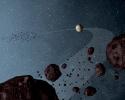
|
-
PIA16211:
-
Trojan Colors Revealed (Artist's Concept)
Full Resolution:
TIFF
(21.61 MB)
JPEG
(818.6 kB)
|

|
2012-10-03 |
|
Galaxy Evolution Explorer (GALEX)
Spitzer Space Telescope
|
IRAC
Ultraviolet/Visible Camera
|
6019x6019x3 |

|
-
PIA15817:
-
The Helix Nebula: Unraveling at the Seams
Full Resolution:
TIFF
(108.7 MB)
JPEG
(3.087 MB)
|

|
2012-10-03 |
|
Spitzer Space Telescope
|
Spitzer Space Telescope
|
3000x2400x3 |
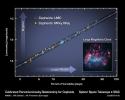
|
-
PIA15819:
-
Cepheids as Cosmology Tools
Full Resolution:
TIFF
(21.61 MB)
JPEG
(453.3 kB)
|

|
2012-10-03 |
|
Spitzer Space Telescope
|
|
4444x2500x3 |
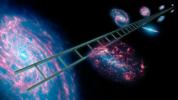
|
-
PIA15818:
-
Climbing the Cosmic Distance Ladder (Artist's Concept)
Full Resolution:
TIFF
(33.35 MB)
JPEG
(769.2 kB)
|

|
2012-09-18 |
|
|
|
1439x1080x3 |
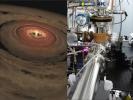
|
-
PIA15805:
-
Ice from the Solar System's Edge (Artist's Concept)
Full Resolution:
TIFF
(4.664 MB)
JPEG
(176.6 kB)
|

|
2012-09-15 |
|
|
|
4800x2700x3 |
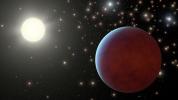
|
-
PIA15802:
-
Starry Starry Skies (Artist's Concept)
Full Resolution:
TIFF
(38.9 MB)
JPEG
(405.3 kB)
|

|
2012-09-15 |
|
|
|
2400x2400x3 |
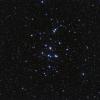
|
-
PIA15801:
-
Bees in the Beehive
Full Resolution:
TIFF
(17.29 MB)
JPEG
(469.1 kB)
|

|
2012-09-11 |
|
Exoplanet
|
|
3600x2400x3 |
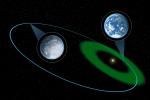
|
-
PIA15800:
-
Eccentric Habitable Zones (Artist's Concept)
Full Resolution:
TIFF
(25.93 MB)
JPEG
(448.8 kB)
|

|
2012-08-31 |
Sol (our sun)
|
SDO
|
Atmosphere Imaging Assembly
|
691x720x3 |

|
-
PIA18167:
-
Magnificent Outburst

Full Resolution:
TIFF
(1.493 MB)
JPEG
(66.48 kB)
|

|
2012-08-31 |
|
|
|
1259x944x3 |
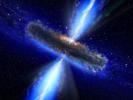
|
-
PIA16114:
-
Quasar Drenched in Water Vapor (Artist's Concept)
Full Resolution:
TIFF
(3.567 MB)
JPEG
(154.9 kB)
|

|
2012-08-29 |
|
Wide-field Infrared Survey Explorer (WISE)
|
WISE Telescope
|
2400x1740x3 |
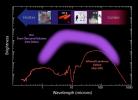
|
-
PIA15815:
-
Analyzing Hot DOG Galaxies
Full Resolution:
TIFF
(12.53 MB)
JPEG
(227.7 kB)
|

|
2012-08-29 |
|
Wide-field Infrared Survey Explorer (WISE)
|
WISE Telescope
|
3000x2400x3 |
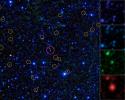
|
-
PIA15814:
-
Homing in on 'Hot Dogs'
Full Resolution:
TIFF
(21.61 MB)
JPEG
(758.8 kB)
|

|
2012-08-29 |
|
Wide-field Infrared Survey Explorer (WISE)
|
WISE Telescope
|
6500x4500x3 |
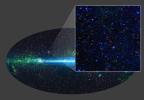
|
-
PIA15813:
-
Extremely Bright and Extremely Rare
Full Resolution:
TIFF
(87.79 MB)
JPEG
(3.944 MB)
|

|
2012-08-29 |
|
Wide-field Infrared Survey Explorer (WISE)
|
WISE Telescope
|
6500x3500x3 |
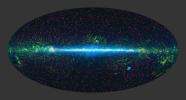
|
-
PIA15812:
-
Galaxies Burn Bright Like High-Wattage 'Light Bulbs'
Full Resolution:
TIFF
(68.28 MB)
JPEG
(3.974 MB)
|

|
2012-08-29 |
|
Wide-field Infrared Survey Explorer (WISE)
|
WISE Telescope
|
2100x2100x3 |
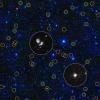
|
-
PIA15811:
-
Exposing Black Holes Disguised in Dust
Full Resolution:
TIFF
(13.24 MB)
JPEG
(734.6 kB)
|

|
2012-08-29 |
|
Wide-field Infrared Survey Explorer (WISE)
|
WISE Telescope
|
6500x4500x3 |

|
-
PIA15810:
-
A Sky Chock-Full of Black Holes
Full Resolution:
TIFF
(87.79 MB)
JPEG
(3.938 MB)
|

|
2012-08-29 |
|
Wide-field Infrared Survey Explorer (WISE)
|
WISE Telescope
|
6500x3500x3 |
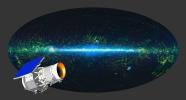
|
-
PIA15809:
-
A WISE 'Eye' on the Whole Sky (Aartist's Concept)
Full Resolution:
TIFF
(68.28 MB)
JPEG
(3.835 MB)
|

|
2012-08-15 |
Messier 100
|
Spitzer Space Telescope
|
IRAC
MIPS
|
1016x1016x3 |
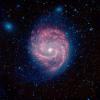
|
-
PIA15910:
-
The Swirling Arms of the M100 Galaxy
Full Resolution:
TIFF
(2.503 MB)
JPEG
(150.8 kB)
|

|
2012-08-15 |
Messier 100
|
Spitzer Space Telescope
|
IRAC
MIPS
|
1016x1016x3 |
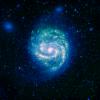
|
-
PIA15909:
-
Hot and Cold in the M100 Galaxy
Full Resolution:
TIFF
(2.12 MB)
JPEG
(148.6 kB)
|

|
2012-07-18 |
|
Spitzer Space Telescope
|
|
5120x2880x3 |
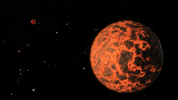
|
-
PIA15808:
-
Exoplanet is Extremely Hot and Incredibly Close (Artist's Concept)

Full Resolution:
TIFF
(44.26 MB)
JPEG
(821.4 kB)
|

|
2012-07-09 |
|
|
Adaptive Optics System and Coronagraph
|
1123x563x3 |
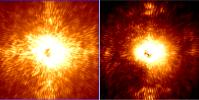
|
-
PIA15807:
-
Using 'Dark Holes' to Spot Planets
Full Resolution:
TIFF
(1.898 MB)
JPEG
(105.7 kB)
|

|
2012-07-02 |
|
Wide-field Infrared Survey Explorer (WISE)
|
WISE Telescope
|
5525x5535x3 |
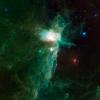
|
-
PIA15635:
-
A Different View of the Flame Nebula
Full Resolution:
TIFF
(91.79 MB)
JPEG
(1.767 MB)
|

|
2012-06-28 |
|
NuSTAR
|
NuSTAR
|
1366x1024x3 |
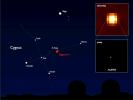
|
-
PIA15804:
-
NuSTAR's First View of High-Energy X-ray Universe
Full Resolution:
TIFF
(4.198 MB)
JPEG
(312.9 kB)
|

|
2012-06-26 |
|
Hubble Space Telescope
|
Advanced Camera for Surveys
WFC3
|
1485x1045x3 |
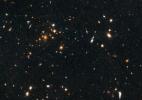
|
-
PIA15803:
-
Galaxy Cluster and Giant Arc
Full Resolution:
TIFF
(4.657 MB)
JPEG
(195.2 kB)
|

|
2012-06-19 |
|
Hubble Space Telescope
|
WFC3
|
761x761x3 |
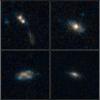
|
-
PIA15831:
-
The Homes of Quasars
Full Resolution:
TIFF
(1.738 MB)
JPEG
(64.82 kB)
|

|
2012-06-08 |
|
Wide-field Infrared Survey Explorer (WISE)
|
WISE Telescope
|
4000x2400x3 |
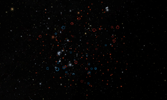
|
-
PIA15637:
-
Highlighting our Tiniest Neighbors

Full Resolution:
TIFF
(28.8 MB)
JPEG
(331.3 kB)
|

|
2012-06-07 |
|
Spitzer Space Telescope
|
IRAC
|
2824x732x3 |

|
-
PIA15634:
Hidden Patterns of Light Revealed by Spitzer
Full Resolution:
TIFF
(6.205 MB)
JPEG
(540.7 kB)
|

|
2012-05-23 |
|
Spitzer Space Telescope
|
|
2299x2299x3 |
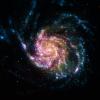
|
-
PIA15630:
-
Pinwheel Galaxy Rainbow
Full Resolution:
TIFF
(15.87 MB)
JPEG
(422.2 kB)
|

|
2012-05-21 |
|
Kepler
|
|
1500x1200x3 |
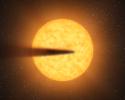
|
-
PIA15629:
-
Possible Disintegrating Planet (Artist's Concept)
Full Resolution:
TIFF
(5.41 MB)
JPEG
(116.9 kB)
|

|
2012-05-17 |
|
Herschel Space Observatory
|
SPIRE
|
6898x3880x3 |
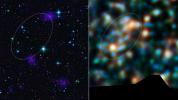
|
-
PIA15659:
-
A Star-Bursting Filament
Full Resolution:
TIFF
(80.29 MB)
JPEG
(2.074 MB)
|

|
2012-05-16 |
Helix Nebula
|
Galaxy Evolution Explorer (GALEX)
|
Ultraviolet/Visible Camera
|
2920x2920x3 |
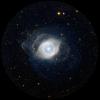
|
-
PIA15658:
-
NGC 7293, the Helix Nebula
Full Resolution:
TIFF
(25.58 MB)
JPEG
(884.6 kB)
|

|
2012-05-16 |
|
Wide-field Infrared Survey Explorer (WISE)
|
WISE Telescope
|
2016x2016x3 |

|
-
PIA15628:
-
The Hustle and Bustle of our Solar System
Full Resolution:
TIFF
(12.21 MB)
JPEG
(508.5 kB)
|

|
2012-05-16 |
|
Wide-field Infrared Survey Explorer (WISE)
|
WISE Telescope
|
4500x3375x3 |
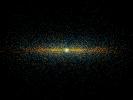
|
-
PIA15627:
-
Edge-on View of Near-Earth Asteroids
Full Resolution:
TIFF
(45.56 MB)
JPEG
(1.088 MB)
|

|
2012-05-16 |
CW Leo
|
Galaxy Evolution Explorer (GALEX)
|
Ultraviolet/Visible Camera
|
8000x5000x3 |
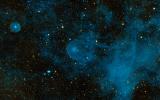
|
-
PIA15417:
-
CW Leo
Full Resolution:
TIFF
(120 MB)
JPEG
(8.366 MB)
|

|
2012-05-16 |
M31
|
Galaxy Evolution Explorer (GALEX)
|
Ultraviolet/Visible Camera
|
9400x7000x3 |
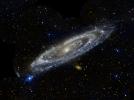
|
-
PIA15416:
-
Andromeda
Full Resolution:
TIFF
(197.4 MB)
JPEG
(6.751 MB)
|

|
2012-05-11 |
Cygnus-X
|
Herschel Space Observatory
|
PACS
SPIRE
|
5897x2151x3 |
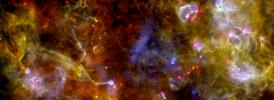
|
-
PIA15626:
-
Cygnus-X: The Cool Swan Glowing in Flight
Full Resolution:
TIFF
(38.05 MB)
JPEG
(963.3 kB)
|

|
2012-05-09 |
|
Herschel Space Observatory
|
|
4500x3600x3 |
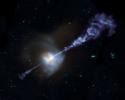
|
-
PIA15625:
-
Artist's Concept: Active Black Hole Squashes Star Formation
Full Resolution:
TIFF
(48.6 MB)
JPEG
(1.935 MB)
|

|
2012-05-08 |
|
Spitzer Space Telescope
|
|
3600x2100x3 |
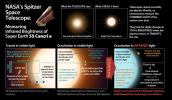
|
-
PIA15624:
-
Measuring Brightness of Super Earth 55 Cancri e
Full Resolution:
TIFF
(22.68 MB)
JPEG
(708.5 kB)
|

|
2012-05-08 |
|
Spitzer Space Telescope
|
|
1916x1076x3 |
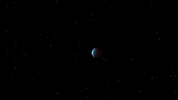
|
-
PIA15623:
-
Super Earth Reveals Itself to Spitzer (Artist Animation)

Full Resolution:
TIFF
(6.194 MB)
JPEG
(42.26 kB)
|

|
2012-05-08 |
|
Spitzer Space Telescope
|
|
3000x2400x3 |
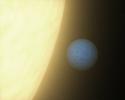
|
-
PIA15622:
-
First-of-Its-Kind Glimpse at a Super Earth (Artist Animation)
Full Resolution:
TIFF
(21.6 MB)
JPEG
(164 kB)
|

|
2012-05-08 |
|
Spitzer Space Telescope
|
IRAC
|
3000x2400x3 |
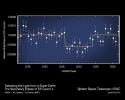
|
-
PIA15621:
-
Magician of a Planet Disappears to Reveal Itself
Full Resolution:
TIFF
(21.6 MB)
JPEG
(332.6 kB)
|

|
2012-05-02 |
|
Galaxy Evolution Explorer (GALEX)
|
|
900x950x3 |

|
-
PIA15620:
-
Black Hole Swallows a Star
Full Resolution:
TIFF
(2.568 MB)
JPEG
(109.1 kB)
|

|
2012-04-26 |
|
Wide-field Infrared Survey Explorer (WISE)
|
IRAS
|
2240x2240x3 |

|
-
PIA15428:
-
Dusty Star Stands Out From the Rest
Full Resolution:
TIFF
(15.07 MB)
JPEG
(265 kB)
|

|
2012-04-24 |
|
Spitzer Space Telescope
|
IRAC
|
1970x2400x3 |

|
-
PIA15426:
-
The Sombrero Galaxy's Split Personality
Full Resolution:
TIFF
(14.2 MB)
JPEG
(437.7 kB)
|

|
2012-04-24 |
|
Spitzer Space Telescope
|
IRAC
|
1970x2400x3 |

|
-
PIA15427:
-
Sombrero Galaxy Not So Flat After All
Full Resolution:
TIFF
(14.2 MB)
JPEG
(339.1 kB)
|

|
2012-04-17 |
|
Chandra X-ray Observatory
Hubble Space Telescope
Spitzer Space Telescope
|
|
3600x2880x3 |

|
-
PIA14415:
-
A New View of the Tarantula Nebula
Full Resolution:
TIFF
(31.1 MB)
JPEG
(1.774 MB)
|

|
2012-04-12 |
|
Wide-field Infrared Survey Explorer (WISE)
|
WISE Telescope
|
3150x3150x3 |
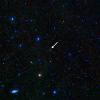
|
-
PIA15424:
-
Lone Blazar
Full Resolution:
TIFF
(29.77 MB)
JPEG
(981.1 kB)
|

|
2012-04-12 |
|
Herschel Space Observatory
|
|
2360x2359x3 |
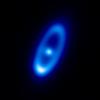
|
-
PIA15425:
-
Herschel Spots Comet Massacre Around Nearby Star
Full Resolution:
TIFF
(16.72 MB)
JPEG
(114.8 kB)
|

|
2012-04-04 |
|
Herschel Space Observatory
|
PACS
SPIRE
XMM-Newton
|
934x956x3 |

|
-
PIA15422:
-
Centaurus A All Prettied Up in Infrared and X-Rays
Full Resolution:
TIFF
(2.683 MB)
JPEG
(38.6 kB)
|

|
2012-04-04 |
|
Herschel Space Observatory
|
PACS
SPIRE
|
934x956x3 |

|
-
PIA15421:
-
The Action-Packed Centaurus A
Full Resolution:
TIFF
(2.683 MB)
JPEG
(24.94 kB)
|

|
2012-04-03 |
|
Galaxy Evolution Explorer (GALEX)
Spitzer Space Telescope
|
IRAC
Ultraviolet/Visible Camera
|
1130x1130x3 |
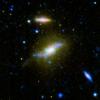
|
-
PIA15419:
-
The Beginning of the End of Star Formation
Full Resolution:
TIFF
(3.835 MB)
JPEG
(129 kB)
|

|
2012-03-29 |
|
SOFIA
|
FORCAST
|
1512x2019x3 |

|
-
PIA15420:
-
NASA's SOFIA Captures Images of the Planetary Nebula M2-9
Full Resolution:
TIFF
(9.175 MB)
JPEG
(78.26 kB)
|

|
2012-03-22 |
|
Galaxy Evolution Explorer (GALEX)
|
Ultraviolet/Visible Camera
|
6000x6000x3 |
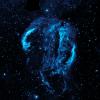
|
-
PIA15415:
-
Cygnus Loop Nebula
Full Resolution:
TIFF
(108 MB)
JPEG
(5.259 MB)
|

|
2012-03-16 |
|
Hubble Space Telescope
|
WFC3
|
1057x528x3 |
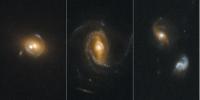
|
-
PIA15418:
-
Quasar Lenses
Full Resolution:
TIFF
(1.677 MB)
JPEG
(61.94 kB)
|

|
2012-03-14 |
|
Wide-field Infrared Survey Explorer (WISE)
|
WISE Telescope
|
10000x5000x3 |
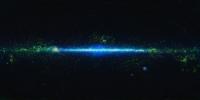
|
-
PIA15482:
-
Mapping the Infrared Universe: The Entire WISE Sky -- Rectangular Format
Full Resolution:
TIFF
(150 MB)
JPEG
(7.365 MB)
|

|
2012-03-14 |
|
Wide-field Infrared Survey Explorer (WISE)
|
WISE Telescope
|
10000x5030x3 |
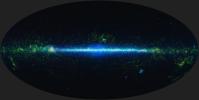
|
-
PIA15481:
-
Mapping the Infrared Universe: The Entire WISE Sky
Full Resolution:
TIFF
(150.9 MB)
JPEG
(6.828 MB)
|

|
2012-03-14 |
|
Wide-field Infrared Survey Explorer (WISE)
|
WISE Telescope
|
5400x4500x3 |
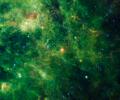
|
-
PIA15480:
-
Echoes of a Stellar Ending
Full Resolution:
TIFF
(72.9 MB)
JPEG
(2.817 MB)
|

|
2012-03-08 |
|
Spitzer Space Telescope
|
IRAC
|
3000x2400x3 |
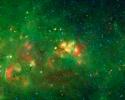
|
-
PIA15413:
-
An Audience Favorite Nebula
Full Resolution:
TIFF
(21.6 MB)
JPEG
(964.2 kB)
|

|
2012-03-08 |
|
Spitzer Space Telescope
|
GLIMPSE
MIPSGAL
|
2799x1926x3 |

|
-
PIA15412:
-
Finding Bubbles in the Milky Way
Full Resolution:
TIFF
(16.17 MB)
JPEG
(546.9 kB)
|

|
2012-02-29 |
|
Herschel Space Observatory
Spitzer Space Telescope
|
Herschel Telescope
IRAC
|
2800x2880x3 |

|
-
PIA13959:
-
Orion's Rainbow of Infrared Light
Full Resolution:
TIFF
(24.19 MB)
JPEG
(321.2 kB)
|

|
2012-02-22 |
|
Spitzer Space Telescope
|
|
4268x2400x3 |

|
-
PIA15266:
-
Building a Buckyball Particle in Space (Artist Concept)
Full Resolution:
TIFF
(30.73 MB)
JPEG
(699.1 kB)
|

|
2012-02-13 |
|
Planck
|
Fermi Gamma-ray Space Telescope
Planck LFI-HFI
|
1024x768x3 |
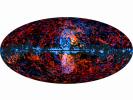
|
-
PIA15229:
-
Galactic Haze seen by Planck and Galactic 'Bubbles' seen by Fermi
Full Resolution:
TIFF
(2.363 MB)
JPEG
(113.3 kB)
|

|
2012-02-13 |
|
Planck
|
Planck LFI-HFI
|
1024x768x3 |
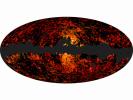
|
-
PIA15228:
-
The Mysterious Galactic Haze seen by Planck
Full Resolution:
TIFF
(2.363 MB)
JPEG
(95.5 kB)
|

|
2012-02-13 |
|
Planck
|
High Frequency Instrument
|
1113x835x3 |
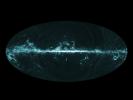
|
-
PIA15227:
-
All-sky Image of Molecular Gas and Three Molecular Cloud Complexes seen by Planck
Full Resolution:
TIFF
(2.792 MB)
JPEG
(78.38 kB)
|

|
2012-01-18 |
|
Herschel Space Observatory
XMM-Newton
|
PACS
SPIRE
XMM-Newton X-ray
|
1352x1353x3 |
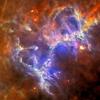
|
-
PIA15260:
-
Herschel Sees Through Ghostly Pillars
Full Resolution:
TIFF
(5.493 MB)
JPEG
(151 kB)
|

|
2012-01-11 |
|
Kepler
|
|
3000x2000x3 |
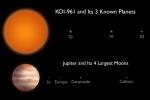
|
-
PIA15259:
-
'Honey I Shrunk the Planetary System' (Artist Concept)
Full Resolution:
TIFF
(18 MB)
JPEG
(175.4 kB)
|

|
2012-01-11 |
|
Kepler
|
|
5400x2400x3 |
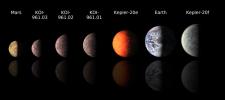
|
-
PIA15258:
-
Sizing Up Exoplanets
Full Resolution:
TIFF
(38.88 MB)
JPEG
(484.3 kB)
|

|
2012-01-11 |
|
Kepler
|
|
4268x2400x3 |
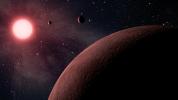
|
-
PIA15257:
-
Mini Planetary System (Artist Concept)
Full Resolution:
TIFF
(30.73 MB)
JPEG
(575.6 kB)
|

|
2012-01-10 |
|
Wide-field Infrared Survey Explorer (WISE)
|
WISE Telescope
|
13530x4909x3 |
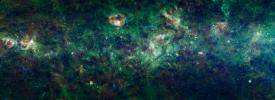
|
-
PIA15256:
-
A Royal Celebration
Full Resolution:
TIFF
(199.3 MB)
JPEG
(16.67 MB)
|

|
2012-01-10 |
|
Herschel Space Observatory
Spitzer Space Telescope
|
IRAC
SPIRE
PACS
|
10000x5000x3 |
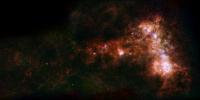
|
-
PIA15255:
-
A Dwarf Galaxy's Star Bar and Dusty Wing
Full Resolution:
TIFF
(150 MB)
JPEG
(6.56 MB)
|

|
2012-01-10 |
|
Herschel Space Observatory
Spitzer Space Telescope
|
IRAC
SPIRE
PACS
|
15500x15500x3 |

|
-
PIA15254:
-
Dusty Space Cloud
Full Resolution:
TIFF
(720.8 MB)
JPEG
(22.21 MB)
|

|
2012-01-10 |
|
Spitzer Space Telescope
|
IRAC
|
12795x12825x3 |
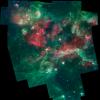
|
-
PIA15253:
-
Stars Brewing in Cygnus X
Full Resolution:
TIFF
(492.3 MB)
JPEG
(14.61 MB)
|

|
2011-12-23 |
Pleiades
|
MESSENGER
|
MDIS - Narrow Angle
|
508x512x1 |

|
-
PIA15244:
-
Stars Are Stars
Full Resolution:
TIFF
(260.6 kB)
JPEG
(58.4 kB)
|

|
2011-12-22 |
|
Wide-field Infrared Survey Explorer (WISE)
|
WISE Telescope
|
4260x4800x3 |

|
-
PIA15252:
-
A Cosmic Wreath
Full Resolution:
TIFF
(61.34 MB)
JPEG
(892.8 kB)
|

|
2011-12-21 |
|
Hubble Space Telescope
Spitzer Space Telescope
|
Hubble Space Telescope
Spizter Space Telescope
|
1200x998x3 |
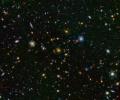
|
-
PIA15251:
-
Distant Galaxy Bursts with Stars
Full Resolution:
TIFF
(3.597 MB)
JPEG
(146.2 kB)
|

|
2011-12-20 |
Kepler-20
|
Kepler
|
|
4264x2400x3 |
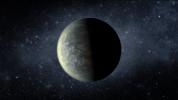
|
-
PIA14889:
-
Kepler-20f -- An Earth-size World (Artist's Concept)
Full Resolution:
TIFF
(30.7 MB)
JPEG
(1.344 MB)
|

|
2011-12-20 |
Kepler-20
|
Kepler
|
|
4264x2400x3 |
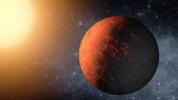
|
-
PIA14888:
-
Kepler-20e -- The Smallest Exoplanet (Artist's Concept)
Full Resolution:
TIFF
(30.7 MB)
JPEG
(1.439 MB)
|

|
2011-12-20 |
Kepler-20
|
Kepler
|
|
1280x720x3 |
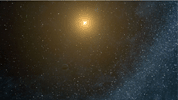
|
-
PIA14887:
-
An Unusual Planetary System (Artist's Concept)

Full Resolution:
TIFF
(2.768 MB)
JPEG
(134.7 kB)
|

|
2011-12-20 |
Kepler-20
|
Kepler
|
|
4200x2700x3 |
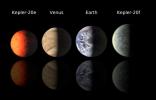
|
-
PIA14886:
-
Earth-class Planets Line Up
Full Resolution:
TIFF
(34.02 MB)
JPEG
(440.2 kB)
|

|
2011-12-12 |
|
Spitzer Space Telescope
|
|
7600x5500x3 |
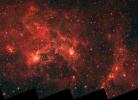
|
-
PIA14885:
-
Dragonfish Coming At You in Infrared
Full Resolution:
TIFF
(125.4 MB)
JPEG
(8.273 MB)
|

|
2011-12-10 |
|
Wide-field Infrared Survey Explorer (WISE)
|
WISE Telescope
|
4750x5900x3 |

|
-
PIA14884:
-
Ancient Supernova Revealed
Full Resolution:
TIFF
(84.08 MB)
JPEG
(2.397 MB)
|

|
2011-11-25 |
|
Wide-field Infrared Survey Explorer (WISE)
|
WISE Telescope
|
11300x10500x3 |

|
-
PIA14881:
-
Jabbah and Associates
Full Resolution:
TIFF
(356 MB)
JPEG
(5.949 MB)
|

|
2011-11-16 |
|
Chandra X-ray Observatory
Spitzer Space Telescope
|
Chandra X-ray Telescope
IRAC
|
3600x3069x3 |
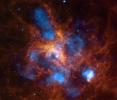
|
-
PIA15079:
-
30 Doradus: The Growing Tarantula Within
Full Resolution:
TIFF
(33.15 MB)
JPEG
(457 kB)
|

|
2011-11-09 |
|
Wide-field Infrared Survey Explorer (WISE)
|
WISE Telescope
|
5200x5200x3 |

|
-
PIA14874:
-
Dusty Reflections in the Scorpion's Claws
Full Resolution:
TIFF
(81.12 MB)
JPEG
(2.361 MB)
|

|
2011-10-26 |
|
Wide-field Infrared Survey Explorer (WISE)
|
WISE Telescope
|
3300x3300x3 |
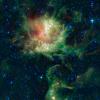
|
-
PIA14873:
-
Does 'Pacman' Have Teeth?
Full Resolution:
TIFF
(32.67 MB)
JPEG
(778.2 kB)
|

|
2011-10-24 |
|
Chandra X-ray Observatory
Spitzer Space Telescope
Wide-field Infrared Survey Explorer (WISE)
|
Chandra X-ray Telescope
IRAC
WISE Telescope
XMM-Newton X-ray
|
2811x2154x3 |
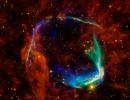
|
-
PIA14872:
-
All Eyes on Oldest Recorded Supernova
Full Resolution:
TIFF
(18.16 MB)
JPEG
(361.1 kB)
|

|
2011-10-24 |
|
Spitzer Space Telescope
Wide-field Infrared Survey Explorer (WISE)
|
IRAC
WISE Telescope
|
2811x2154x3 |
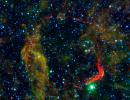
|
-
PIA14871:
-
All That Remains of Exploded Star
Full Resolution:
TIFF
(18.16 MB)
JPEG
(660.9 kB)
|

|
2011-10-20 |
|
Herschel Space Observatory
|
|
3000x2400x3 |
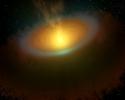
|
-
PIA14870:
-
Misty Star in the Sea Serpent (Artist's Concept)
Full Resolution:
TIFF
(21.6 MB)
JPEG
(258.7 kB)
|

|
2011-10-19 |
|
Spitzer Space Telescope
|
|
4267x2400x3 |

|
-
PIA14739:
-
It's Raining Comets (Artist's Concept)
Full Resolution:
TIFF
(30.72 MB)
JPEG
(328.2 kB)
|

|
2011-09-28 |
NGC 281
|
Chandra X-ray Observatory
Spitzer Space Telescope
|
Chandra X-ray Telescope
IRAC
|
3600x2719x3 |

|
-
PIA14731:
-
The 'Pacman Nebula'
Full Resolution:
TIFF
(29.37 MB)
JPEG
(797.6 kB)
|

|
2011-09-20 |
|
Wide-field Infrared Survey Explorer (WISE)
|
|
4888x3300x3 |
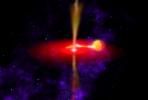
|
-
PIA14730:
-
Flaring Black Hole (Artist's Concept)
Full Resolution:
TIFF
(48.39 MB)
JPEG
(390.1 kB)
|

|
2011-09-16 |
|
Spitzer Space Telescope
|
IRAC
|
1757x1417x3 |
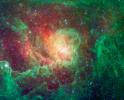
|
-
PIA14728:
-
Into the Depths of the Lagoon Nebula
Full Resolution:
TIFF
(7.481 MB)
JPEG
(449.4 kB)
|

|
2011-08-24 |
|
Wide-field Infrared Survey Explorer (WISE)
|
WISE Telescope
|
4095x2700x3 |

|
-
PIA14723:
-
Dark Murky Clouds in the Bright Milky Way
Full Resolution:
TIFF
(33.17 MB)
JPEG
(1.251 MB)
|

|
2011-08-23 |
|
Wide-field Infrared Survey Explorer (WISE)
|
WISE Telescope
|
874x874x3 |
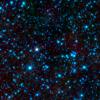
|
-
PIA14721:
-
Reigning Title-Holder for Coldest Brown Dwarf
Full Resolution:
TIFF
(2.294 MB)
JPEG
(96.81 kB)
|

|
2011-08-10 |
Helix Nebula
|
Spitzer Space Telescope
|
IRAC
|
2800x1400x3 |
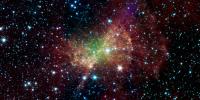
|
-
PIA14417:
-
Weighing in on the Dumbbell Nebula
Full Resolution:
TIFF
(11.76 MB)
JPEG
(495.8 kB)
|

|
2011-08-01 |
|
Herschel Space Observatory
Spitzer Space Telescope
|
HIFI
IRAC
|
3000x2400x3 |

|
-
PIA14407:
-
Oxygen in Orion
Full Resolution:
TIFF
(21.6 MB)
JPEG
(308.4 kB)
|

|
2011-08-01 |
|
Herschel Space Observatory
Spitzer Space Telescope
|
HIFI
IRAC
|
3000x2400x3 |
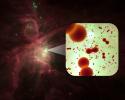
|
-
PIA14406:
-
Oxygen No Longer Lost in Space
Full Resolution:
TIFF
(21.6 MB)
JPEG
(276.5 kB)
|

|
2011-07-27 |
|
Wide-field Infrared Survey Explorer (WISE)
|
WISE Telescope
|
3000x3000x3 |
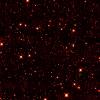
|
-
PIA14405:
-
A Glimmer in the Eye of WISE
Full Resolution:
TIFF
(27 MB)
JPEG
(1.194 MB)
|

|
2011-07-27 |
|
Wide-field Infrared Survey Explorer (WISE)
|
WISE Telescope
|
3000x2400x3 |
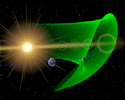
|
-
PIA14404:
-
Trojan Asteroid Shares Orbit with Earth (Artist Animation)

Full Resolution:
TIFF
(21.6 MB)
JPEG
(682 kB)
|

|
2011-07-21 |
|
Wide-field Infrared Survey Explorer (WISE)
|
WISE Telescope
|
1900x1900x3 |
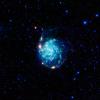
|
-
PIA14403:
-
M 101: The Pinwheel Galaxy
Full Resolution:
TIFF
(10.85 MB)
JPEG
(235.8 kB)
|

 Planetary Data System
Planetary Data System





















































































































